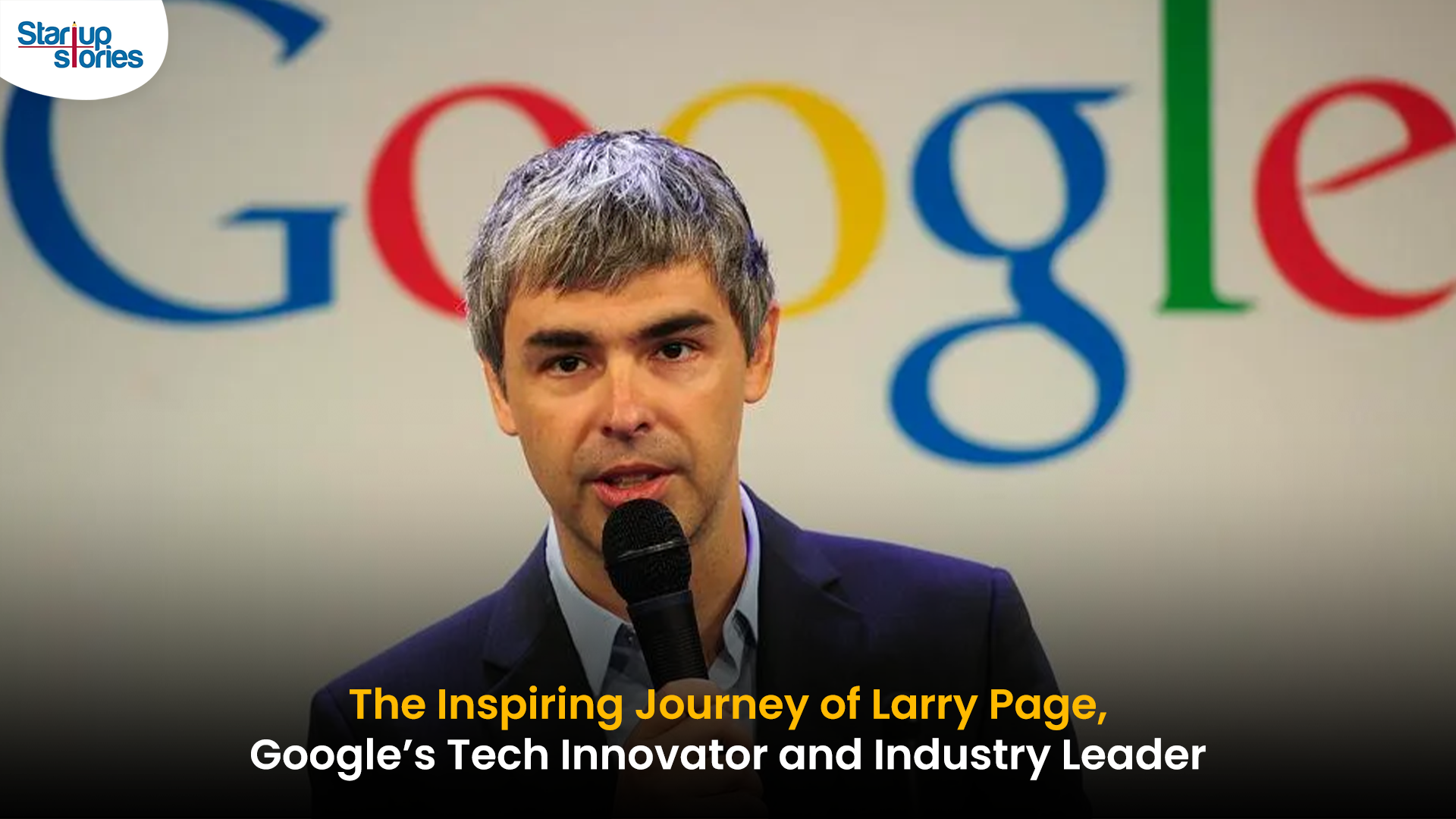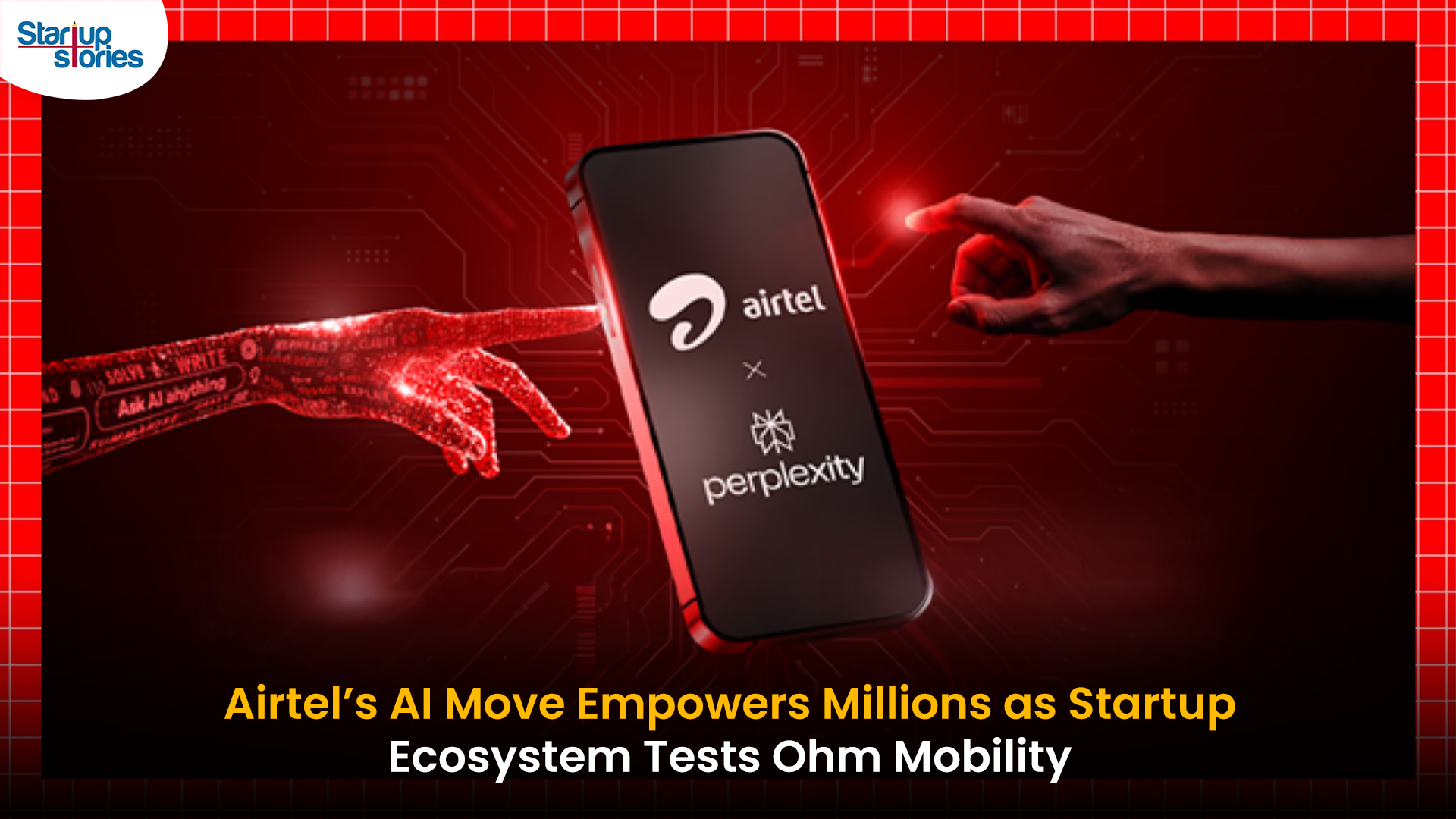Stories
What Are The Various Stages Of A Startup?

One of the most fulfilling journeys anyone can undertake is to begin a startup. There are a lot of stories about how a startup makes it big in the market and reading them can inspire oneself to undertake a similar journey. However, beginning a startup and scaling it up is easier said than done as there are multiple stages to running a startup. Identifying a problem and coming up with a solution is not the only thing which matters when it comes to founding a startup but there are multiple other parameters which need to be considered along the journey. By looking at the multiple startups which succeeded and the big picture, a startup’s journey can be quantified into stages. Skipping any of these stages and moving on to the next stage would surely be a setup for a failure.
Read along to find out the various stages in the journey of a startup.
1) Problem discovery
Anybody can come up with an idea but the most important thing is to come up with an idea which solves a particular problem. This stage is about discovering bottlenecks and problems faced by customers in a market. This is the stage where a startup needs to focus on what the customer wants rather than what a startup needs to do. This is where startups need to interview customers to find out the problems they are facing and come up with a solution. For example, Uber discovered that customers need a simple way to hail a cab and came up with their platform which connects cabs with customers.
2) Ideating
The next stage is to find a value proposition for customers. This begins by ideating to find opportunities and create good solutions. There are high chances for good ideas to come up in the discovery stage during the customer interviews as they might provide their own insights and ideas. By the end of this stage, a startup should be able to come up with a solution which solves a problem by providing a solution which an existing competitor would not provide.
3) Problem/Solution fit
There is a high likelihood of the first solution not being the right solution. The initial plans might not work out and therefore Plan A should never be assumed as the right solution. Sometimes the immediate solution will not nudge a customer to make a purchase. This stage exists to make multiple iterations and if possible pivots into different product models. During this stage, a startup needs to introduce a product design, clickable prototypes, or product features which the customers can interact with physically. The initial problem could be solved if customers show interest and prepay for the product or have taken a certain set of actions that you can define based on your product, target and market. For instance, in the case of freemium models actionables could mean completing a long survey, joining a waitlist and referring X number of people or applying to become a user.
ALSO READ: What Is Seed Funding And What Are The Sources For Seed Funding For Startups
4) Product/market fit
In order to go for a product/market fit, a startup would need data like customer acquisition costs (CAC) and customer lifetime value. This could only be done with a launched product which is in use. One of the best indicators for a good product/market fit is acquiring customers at a lower acquisition cost. A CAC can be calculated by dividing all the costs spent on acquiring more customers (marketing expenses) by the number of customers acquired in the period the money was spent. For example, if a company spent INR 100 on marketing in a year and acquired 100 customers in the same year, their CAC is INR 1. Net Promoter Score (NPS) is one of the easiest ways to measure product/market fit. Net Promoter Score is the percentage of customers rating their likelihood to recommend a company, a product, or a service to a friend or colleague on a scale of 1-10 with 10 being highly likely and 1 being highly unlikely.
5) Scaling up
This is the stage where a startup needs to focus on diversifying their product offerings. This is where a startup needs to iterate what is working and put in processes which make these workflows faster. This is the stage where a company could think of hiring more resources, opening a larger office space and expanding in different areas. For example when the hyperlocal delivery startup Dunzo began, it was limited to Bengaluru. However, Dunzo soon expanded to other metropolitan cities to expand their operations and scale up.
Many startups and entrepreneurs focus on scaling up rapidly without going through the proper startup lifecycle and often end up in losses. Building a startup could be fun but it is important to pay attention to each of these steps throughout its journey.
Entrepreneur Stories
Indian Man Quits JPMorgan, Takes 70% Pay Cut to Launch $6 Million Startup

Leaving behind a high-paying job at JPMorgan, an Indian entrepreneur embraced a 70% salary cut to pursue true purpose and passion in the startup world. Disenchanted with what he described as a “robotic” corporate routine, he sought meaningful work that made a real impact. This pivotal decision marked the beginning of his new journey, one focused on value creation rather than titles and corporate perks.
Powered by resilience and fresh perspective, the entrepreneur launched his own startup, prioritizing innovation and hands-on solutions. The road was challenging, but his vision resonated with the market: the startup quickly gained traction and raised $6 million—an impressive acknowledgement of its potential in a competitive landscape. Every hard lesson from early setbacks and bootstrapping paid off in real customer growth and investor confidence.
Today, his journey stands as an inspiring example for professionals seeking authentic success outside the corporate grind. By trading comfort for creative freedom, he grew a venture that solves important problems, generates jobs, and builds wealth beyond just salary. For ambitious founders, his story highlights the power of risk-taking, adaptability, and relentless focus on impact in India’s thriving startup ecosystem.
Videos
Larry Page: The Visionary Co-Founder Behind Google’s Global Success

Larry Page is a visionary technology entrepreneur and co-founder of Google, one of the world’s most influential companies. Born in 1973 in Michigan, Page grew up surrounded by computer technology, which inspired his passion for innovation from an early age. He studied computer engineering at the University of Michigan and later pursued his PhD at Stanford University, where he developed the revolutionary PageRank algorithm with Sergey Brin. This technology fundamentally changed the way search engines rank websites, making Google the most accurate and popular search engine globally.
The journey of Larry Page and Google began in 1998 when they officially launched the search engine from a small garage. Leveraging their unique algorithm, Google quickly surpassed competitors due to its ability to deliver highly relevant search results, transforming internet search forever. Under Larry Page’s leadership as CEO, Google expanded beyond search to launch groundbreaking products including YouTube, Gmail, and Google Maps, turning it into a global tech powerhouse that shapes how we access and interact with information online.
Larry Page later became the CEO of Google’s parent company, Alphabet Inc., driving innovation and investment in next-generation technologies such as artificial intelligence, autonomous vehicles, and healthcare solutions. His visionary leadership and commitment to technological advancement have cemented his legacy as one of the most influential figures in the tech industry. Today, Larry Page remains a key influencer in shaping the future of technology and digital innovation worldwide.
Entrepreneur Stories
India’s Tech Story: Airtel Spreads AI Access, Ohm Mobility Lessons

Bharti Airtel has launched the innovative “Airtel-Perplexity Blueprint,” partnering with Perplexity to provide over 360 million customers free access to Perplexity Pro for a year—a benefit valued at ₹17,000 ($200). This collaboration enables Airtel users across mobile, broadband, and digital TV to harness advanced capabilities in generative AI, including leading AI models like GPT 4.1, Claude, and Gemini, along with up to 300 Pro searches daily, image generation, document analysis, and personalized planning services. The move is seen as a milestone for telecom innovation and the democratization of AI in India, making powerful research and productivity tools accessible to a massive user base.
This strategic partnership positions Airtel as an “AI-first” telecom provider, allowing it to gain key insights into user interactions with artificial intelligence and adapt its networks for growing digital demands. For Perplexity, the tie-up grants exclusive access to India’s vast telecom audience, rapidly propelling the app to the No. 1 spot on the Indian App Store, surpassing global competitors like ChatGPT and Google Gemini. Airtel customers can activate their complimentary subscription seamlessly through the Airtel Thanks App, under the Rewards and OTTs section, reinforcing Airtel’s commitment to digital customer empowerment.
The broader Indian startup ecosystem reflects both breakthrough innovation and hard-earned lessons, illustrated by the recent shutdown of Ohm Mobility, an EV financing startup. Despite multiple pivots and industry-leading investors, Ohm Mobility struggled to achieve a sustainable business model—a reminder of the challenges in market fit and adaptability. As AI adoption accelerates and startup realities evolve, industry leaders like Airtel and Perplexity are setting new standards, while others, like Ohm Mobility, offer valuable insights on resilience and the importance of business model flexibility in India’s dynamic tech landscape.














Natividad Wolery
April 15, 2025 at 4:32 am
Hi there, You’ve done a great job. I’ll definitely digg it and personally recommend to my friends. I’m confident they will be benefited from this site.
Jose Boissonneault
May 3, 2025 at 3:39 am
you have a great blog here! would you like to make some invite posts on my blog?
xx3g6
June 5, 2025 at 9:25 am
clomiphene brand name how to get clomid buying cheap clomid pill how can i get cheap clomiphene tablets can i buy generic clomid clomiphene tablets uses in urdu cost of cheap clomiphene online
chauffeur privé
June 6, 2025 at 7:03 am
Wohh exactly what I was looking for, thankyou for putting up.
Suzanne Peres
July 1, 2025 at 11:49 pm
Hello There. I found your blog using msn. This is a really well written article. I will be sure to bookmark it and return to read more of your useful information. Thanks for the post. I’ll definitely return.
here
July 29, 2025 at 11:13 pm
Simply wish to say your article is as astounding. The clearness to your submit is just nice and that i could suppose you’re an expert on this subject. Fine together with your permission allow me to snatch your RSS feed to stay updated with coming near near post. Thanks one million and please keep up the gratifying work.
Cat 5E Installation near me san antonio tx
July 30, 2025 at 3:00 am
Very superb information can be found on web site. “Prayer is the wing wherewith the soul flies to heaven, and meditation the eye wherewith we see God.” by Ambrose of Milan.
web design
August 7, 2025 at 8:57 am
naturally like your web-site however you have to test the spelling on quite a few of your posts. A number of them are rife with spelling issues and I to find it very troublesome to inform the truth however I will certainly come back again.
bandar togel
August 16, 2025 at 1:28 pm
I am really impressed with your writing skills and also with the layout on your blog. Is this a paid theme or did you customize it yourself? Either way keep up the excellent quality writing, it’s rare to see a nice blog like this one nowadays..
slot demo
August 18, 2025 at 2:24 pm
Dead written articles, regards for selective information.
basket168
August 19, 2025 at 4:54 am
Attractive section of content. I just stumbled upon your site and in accession capital to assert that I acquire actually enjoyed account your blog posts. Any way I’ll be subscribing to your augment and even I achievement you access consistently rapidly.
macau jitu
August 21, 2025 at 4:35 am
You are my intake, I own few blogs and often run out from brand :). “He who controls the past commands the future. He who commands the future conquers the past.” by George Orwell.
slot zeus
August 22, 2025 at 12:07 pm
As a Newbie, I am continuously exploring online for articles that can help me. Thank you
slot 777
August 22, 2025 at 11:03 pm
I am continuously searching online for ideas that can benefit me. Thank you!
canon telefono
August 24, 2025 at 12:27 am
I’ve been absent for some time, but now I remember why I used to love this web site. Thanks, I’ll try and check back more often. How frequently you update your site?
ayuda PFG arquitectura
August 24, 2025 at 1:18 pm
I don’t even know how I ended up here, but I thought this post was good. I do not know who you are but certainly you are going to a famous blogger if you are not already 😉 Cheers!
ayuda TFM arquitectura
August 24, 2025 at 8:51 pm
Hello I am so excited I found your website, I really found you by mistake, while I was searching on Bing for something else, Nonetheless I am here now and would just like to say cheers for a incredible post and a all round interesting blog (I also love the theme/design), I don’t have time to go through it all at the moment but I have saved it and also added your RSS feeds, so when I have time I will be back to read much more, Please do keep up the awesome job.
S'inscrire sur Binance
October 5, 2025 at 8:05 am
Your article helped me a lot, is there any more related content? Thanks!
Scarlet Fongvongsa
October 6, 2025 at 12:16 am
I truly enjoy examining on this web site, it contains wonderful blog posts. “It is easy to be nice, even to an enemy – from lack of character.” by Dag Hammarskjld.
Sammy Baller
November 2, 2025 at 11:10 pm
Woah! I’m really enjoying the template/theme of this site. It’s simple, yet effective. A lot of times it’s difficult to get that “perfect balance” between superb usability and appearance. I must say you have done a very good job with this. In addition, the blog loads extremely quick for me on Opera. Outstanding Blog!
MM88
November 5, 2025 at 10:16 am
Khám phá thế giới giải trí trực tuyến đỉnh cao tại MM88, nơi mang đến những trải nghiệm cá cược thể thao và casino sống động.
站群程序
November 7, 2025 at 2:43 pm
采用高效谷歌站群策略,快速提升网站在搜索引擎中的可见性与权重。谷歌站群
谷歌站群
November 8, 2025 at 2:22 pm
专业构建与管理谷歌站群网络,助力品牌实现全域流量的强势增长。谷歌站群
iwin
November 10, 2025 at 8:14 am
iwin – nền tảng game bài đổi thưởng uy tín, nơi bạn có thể thử vận may và tận hưởng nhiều tựa game hấp
ios超级签
November 13, 2025 at 12:53 am
苹果签名,苹果超级签平台,ios超级签平台ios超级签苹果企业签,苹果超级签,稳定超级签名
nextogel
November 13, 2025 at 2:48 pm
Sweet internet site, super design and style, rattling clean and employ pleasant.
Gelatin Trick
November 16, 2025 at 12:25 am
You actually make it seem really easy with your presentation however I in finding this matter to be really one thing which I feel I might never understand. It sort of feels too complex and extremely broad for me. I am having a look ahead for your next publish, I?¦ll try to get the grasp of it!
Louis Kroh
November 16, 2025 at 2:44 am
My husband and i felt now joyous that Chris could finish up his web research through your precious recommendations he grabbed through your blog. It’s not at all simplistic to just find yourself giving away solutions which usually the others have been selling. Therefore we take into account we now have the website owner to be grateful to for that. The type of explanations you made, the simple web site navigation, the friendships your site help to promote – it’s all astounding, and it’s letting our son and us do think this subject is interesting, and that’s tremendously vital. Many thanks for the whole lot!
Kuwin
November 18, 2025 at 3:00 pm
kuwin sở hữu kho game đa dạng từ slot đến trò chơi bài đổi thưởng, mang đến cho bạn những giây phút giải trí tuyệt vời.
GO88
November 20, 2025 at 10:15 pm
Tham gia cộng đồng game thủ tại Go88 để trải nghiệm các trò chơi bài, poker phổ biến nhất hiện nay.
the brain song review
November 21, 2025 at 2:06 am
I like the valuable information you provide in your articles. I will bookmark your weblog and check again here regularly. I am quite certain I will learn many new stuff right here! Good luck for the next!
MM88
November 22, 2025 at 7:04 am
Với giao diện mượt mà và ưu đãi hấp dẫn, MM88 là lựa chọn lý tưởng cho các tín đồ giải trí trực tuyến.
J88
November 23, 2025 at 4:29 am
Đến với J88, bạn sẽ được trải nghiệm dịch vụ cá cược chuyên nghiệp cùng hàng ngàn sự kiện khuyến mãi độc quyền.
gelatin trick
December 7, 2025 at 7:06 am
Some genuinely nice stuff on this web site, I love it.
Neurocept
December 7, 2025 at 10:53 am
I believe that is among the so much significant information for me. And i am satisfied studying your article. But should commentary on some common things, The site style is wonderful, the articles is actually excellent : D. Just right job, cheers
Gelatin Trick for Weight Loss
December 8, 2025 at 9:55 am
Have you ever considered writing an e-book or guest authoring on other websites? I have a blog centered on the same ideas you discuss and would love to have you share some stories/information. I know my subscribers would appreciate your work. If you are even remotely interested, feel free to send me an e mail.
Kliknij aby dowiedzieć się więcej
December 9, 2025 at 10:40 am
Solid analysis
1win
December 12, 2025 at 6:32 am
https://t.me/s/be_1win/949
1win
December 12, 2025 at 11:38 am
https://t.me/be_1win/940
AtomCasino
December 13, 2025 at 12:47 am
https://t.me/s/atom_official_casino